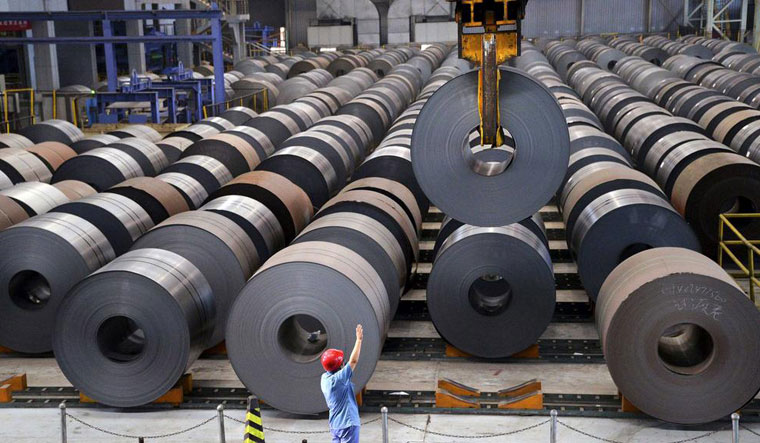India–US Trade Tensions Rise Over Steel and Auto Tariffs NMDC Limited reports a 38% drop in Q4 FY24 consolidated net profit RINL to Raise $23 Million Through Land Sales Amid Crisis

ICRA predicts domestic steel consumption growth will slow to 7-8% in FY25, following three consecutive years of double-digit growth. The industry will face challenges such as low steel prices, high input costs, a temporary slowdown in domestic demand, and a weak external environment.
As the industry navigates through a period of softness in steel prices, elevated input costs, a temporary deceleration in domestic demand growth close to the elections, and a weak external environment, the rating agency expects the operating environment to remain challenging in the upcoming fiscal year.
Most of the world's major steel-consuming centres are expected to see below-average economic growth shortly, which has caused a shift in the global steel trade flows towards rapidly expanding regions like India. India is expected to become a net finished steel importer in FY24 after five years, with export prospects remaining bleak, according to ICRA. “Unless the external environment meaningfully improves from here on, India could continue to remain a net steel importer in the next fiscal as well,” it said.
Domestic steel consumption growth is expected to slow down to 7-8% in FY25 (as against an estimated 12-13% in FY24), bucking the trend of the previous few years, when the industry experienced the fastest period of growth after the global financial crisis.
Jayanta Roy, senior vice president of ICRA, said that in the six months between June and November 2023, as the government accelerated infrastructure spending ahead of the general elections, domestic steel demand grew at a brisk pace of around 16% over the same period in the last financial year.
The demand conditions helped increase industry capacity utilisation to a decadal high of 88% in FY24. Roy, however, said, the prints for December 2023 and January 2024 reveal a marked slowdown in the consumption growth to just 6.5%. “While these are early trends, these numbers nonetheless hint at demand remaining soft over the next two quarters as the government spending moderates around the election period,” he said.
On the cost side, higher coking coal consumption costs, along with a 25-30% increase in domestic iron ore prices (ex-mines basis) since August 2023, are expected to nibble at the industry’s profitability in H2 FY24, pushing second-half earnings of steel mills markedly lower than the first half of the current financial year, ICRA said.
In Q4 FY24, primary producers could witness over 500 basis points (bps) contraction in margins sequentially. After touching the high watermark of 27.7% at the peak of the commodity price rally in FY22, the operating profit margin for the domestic steel industry declined sharply to 14-16% in FY23/FY24E as earnings got squeezed between the falling steel prices and elevated input costs, Roy said.
“In our base case scenario, we expect domestic steel prices to average lower by 3-4% in FY25 over FY24. This leads us to believe that the industry’s operating profit margins could sequentially trend down by 110-115 bps to 14.7% in FY25 against an estimated level of 15.8% in FY24,” he said.
The industry is set to increase capacity significantly—15.3 million tonnes per annum (MTPA) will be commissioned between FY21 and FY23, and another 38.5 MTPA is expected to come onstream between FY24 and FY27. With earnings expected to remain under pressure in FY25 and capex plans in full swing, the industry’s leverage, according to ICRA, will likely increase to 2.5-3.0 times in FY25. “However, this is still lower than the through-the-cycle leverage levels of around 3.5 times, making the industry resilient to withstand a worsening macroeconomic environment,” the credit rating agency said.
Also Read : India will stimulate iron ore enrichment to meet needs of steelmakers Global demand for Indian iron-ore soars, driven by Chinese Appetite and duty removal